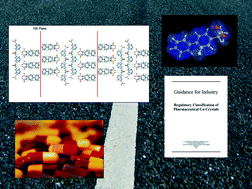
In the pharmaceutical arena it is agreed that co-crystals form a vital part of the solid-state toolbox, allowing the progression of novel compounds through the development pathway to patients and improving properties in older medicines. Sadly though, few co-crystals have made it to the market in the form of a new licensed product. This displays a disconnect between research effort and end product. For some time now it has been possible to determine the formation of co-crystals, by a variety of screening and analytical means; although it is recognised that there will always be phases that sit in the ‘greyer’ area of the salt-co-crystal continuum. It is also possible, with limitations, to predict the formation of co-crystals in silico via energetic and structural considerations. So what are the major hurdles and missing links, and what are the key structural properties we need to study to improve the success rate? This highlight hopes to address these.
http://pubs.rsc.org/en/Content/ArticleLanding/2014/CE/C4CE00127C?utm_medium=email&utm_campaign=pub-CE-vol-16-issue-26&utm_source=toc-alert#!divAbstract
Pharmaceutical co-crystals – are we there yet?
H
*Corresponding authors
a School of Pharmacy, University of Lincoln, Brayford Pool, Lincolnshire, Lincoln, UK
bChemistry, University of Southampton, Highfield, Southampton, UK
cSchool of Medicine, Pharmacy and Health (Pharmacy), Durham University, Wolfson Building, F111, Queen's Campus, Stockton on Tees, UK
E-mail: d.J.berry@durham.ac.uk
E-mail: d.J.berry@durham.ac.uk
CrystEngComm, 2014,16, 5753-5761
DOI: 10.1039/C4CE00127C
No comments:
Post a Comment